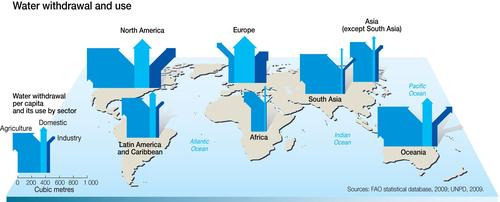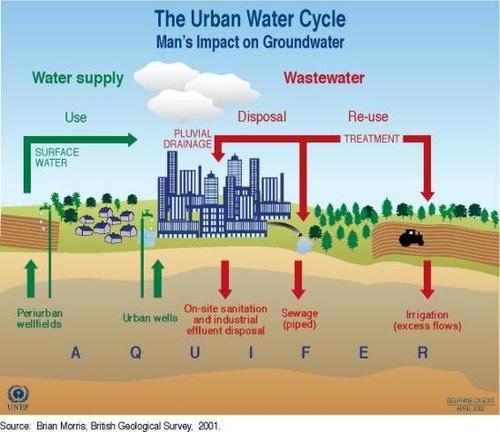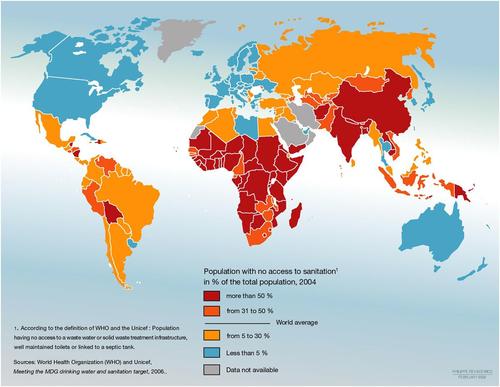Human impact
Humans significantly influence the global water cycle both quantitatively and qualitatively. Concerning quantity, humans withdraw 8% of the total annual renewable freshwater and appropriate 26% of annual evapotranspiration and 54% of accessible runoff. Humankind’s control of runoff is now global and we are significant players in the hydrological cycle. Per capita use is increasing (with better lifestyles) and population is growing. Thus, the percentage of appropriated water is increasing. Together with spatial and temporal variations in available water, the consequence is that water for all our uses is becoming scarce and leading to a water crisis (WWAP 2003).
Local water cycles are also influenced by the way we plan our cities: When land is paved, water cannot soak into the soil. It runs off sealed surfaces very rapidly, so pipes are needed to carry the resulting large volumes of stormwater to the nearest stream or beach. The result is that streams carry less water or dry up when it is not raining and flood when it does. Moreover, pollutants on roads and yards are swept into waterways. (Conradin 2012c)
The more humans use water, the more they also influence water quality: Nutrients from fertilizer and from sanitation systems are carried directly into aquatic ecosystems and pesticides, industrial pollutants, or medical substances eventually end up in water bodies. As all these substances can be soluble, they also become part of the water cycle (WWAP 2003). Hence, freshwater resources are reduced further by pollution. Some 2 million tons of waste per day are disposed of within receiving waters, including industrial waste and chemicals, human waste and agricultural waste (fertilizers, pesticides and pesticide residues). (UNEP & UN HABITAT 2010)
Outlook
Water scarcity is a complex problem - one of unsustainable use, sectoral thinking, mismanagement and a lacking and holistic water governance. As often, it is the life of the poor, which is affected most: by water related disease, by degraded and dangerous environments, by a lack of hygiene in food and water. Almost one billion people do not have access to improved water sources, and 2.6 billion do not use improved sanitation options.
Single sector approaches such as wastewater treatment or water management are limited in their actions. To save and recycle water, regain resources, to protect ecosystems and to provide humankind with a prosperous and healthy environment the whole water cycle needs to be taken into account in an integrated, holistic way – linking sustainable water management, sanitation and agriculture. (Conradin 2012c)


